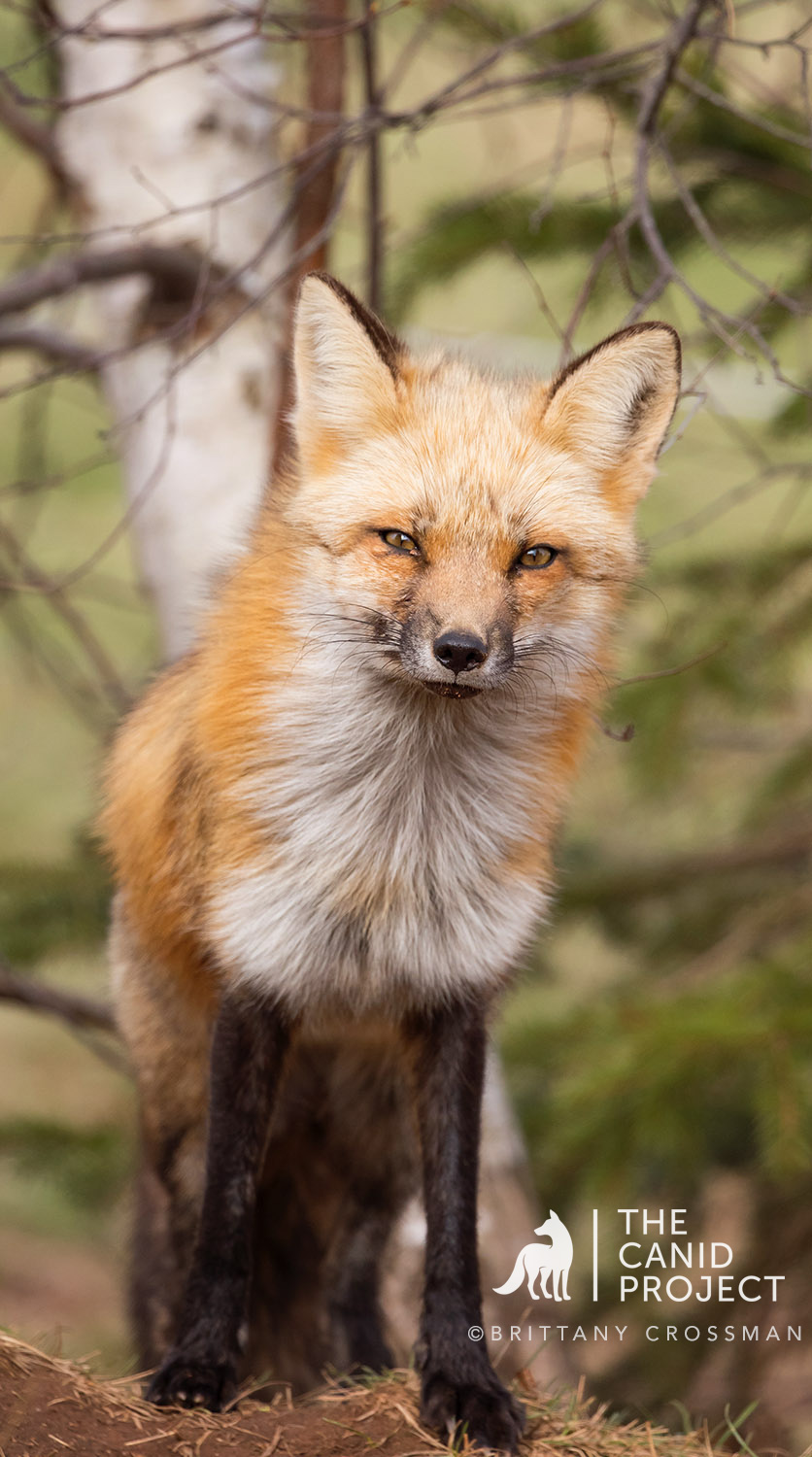Keeping Wildlife Wild
/Coexisting with Urban Red Foxes: Why there Is No Other Option (Article Series)
Article Two: Keeping Wildlife Wild - Please Stop Feeding the Wildlife – The Negative Ramifications
Authors: Brittany Crossman // Photography: Brittany Crossman and Amy Shutt
CLICK ON IMAGES TO SEE LARGER VERSIONS // MOUSE OVER TO READ CAPTIONS
Although the act usually comes from kind-heartedness or lack of education, feeding wildlife is more harmful than beneficial. From bears to foxes to squirrels, animals have been making recent headlines panhandling for easy snacks. There are many reasons why one should refrain from feeding wildlife, a few of which we will cover. Whereas The Canid Project focuses on members of the canid family, this is primarily based on the red fox, although many other species are in the limelight of this topic as well. So what is the big deal?
Here is just a handful of the reasons why we need to let the wildlife be wild:
“But they look hungry sitting there staring, or walking up to my car”
They aren’t. They are very capable of feeding themselves without help. What these animals are doing is taking advantage of an easy meal in which they do not need. Making wildlife dependant on generosity only hurts them in the long run. Most people act in the moment, without thinking about long-term consequences their actions may have. Not to mention human food typically isn’t healthy for wildlife either, decreasing consumption of proper nutrients, which then can lead to health problems or disease.
A common trend also seems to be feeding wildlife from vehicles, throwing food out the window. Feeding foxes from cars does nothing but endanger them. Red foxes begin to associate vehicles as a moving refrigerators, ultimately losing their fear of them. As a result, they will begin approaching oncoming traffic. Modifying fox behaviour by conditioning them to approach vehicles for food, can cause accidents, if people swerve to avoid hitting them, or cause unnecessary injury to the animals. Not every traveler will share the same response as you, not everyone cares about wildlife. Unfortunately, red foxes fed from cars usually end up losing their lives to vehicle collisions.
“I just wanted to get a photo”.
Your best photo ops will definitely not be of a fox chowing down on Doritos, cookies, or bread. As a wildlife photographer, I understand striving to capture that perfect moment. The best advice for this is simply to be patient, besides, capturing natural moments is far more rewarding. If you give wildlife their space, be respectful by not making them feel threatened, eventually they will carry on with their business like you are not even there. Wildlife doesn’t need to be fed in order obtain images of intimate moments. If anything, feeding wildlife will ruin your photographic opportunities. They will fill up on “junk food” and you will undoubtedly miss out on shooting natural behaviours such as hunting, playing, and interactions among one another.
Some species self-regulate their populations based on food accessibility.
The red fox is one of them. This means, fertility rates and birth rates are based on how much food is around. When plentiful, some species give birth to more kits. When humans interfere by creating a temporary false sense of abundance, especially during the tourist season, it offsets this balance. Leaving garbage out, leftover food, or purposely feeding wildlife creates an artificial food supply. After the tourist season is over, everyone packs up and leaves, there is no longer that leftover food or garbage to scavenge. If there isn’t a natural abundance of prey or food, this causes competition for resources and inevitably injury, starvation, and worst case death.
Human-wildlife conflict is probably one of the more popular issues with feeding.
Feeding wild animals teaches that people are food sources, which then causes them to lose their natural fear of humans. Without this fear, wildlife may approach people, coming too close for comfort, hoping for that handout. This behaviour can either irritate or frighten people, leading to complaints, relocation, or euthanasia of the animal deemed problematic. Feeding, especially by hand, amplifies the odds of someone getting bitten. When that occurs, it is almost always the animal that suffers the grim consequences. Putting yourself and the animal at risk for a momentary thrill is just plain irresponsible, and inconsiderate.
There are many negative ramifications of feeding wildlife for both humans and the wildlife. We hope that with the right education and community outreach the public will remember these consequences before making the short-sighted decision to offer a free handout. Wildlife can still be enjoyed in backyards and parks without feeding them; it opts for a safer alternative for people and wildlife alike.
THE CANID PROJECT contributors actively research and document human-canid relationships and both the positive and negative ramifications of these relationships. The project's aim, as a global creative conversation, is to document and share the stories of humans and the wild canids who enter each other's lives in some capacity. We actively present this information through our photography, creative non-fiction narrative, exhibits, talks, and community outreach to inspire and educate the public, as well as shed light on how these relationships shape our views on the wild canid species. If you would like to donate to this 501c3 non-profit to help further our efforts please click the donation button below, take one of our workshops, or visit our shop! Thank you!


















